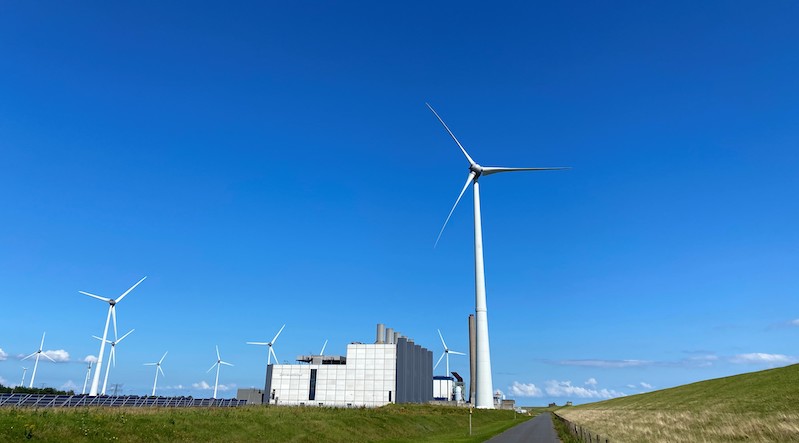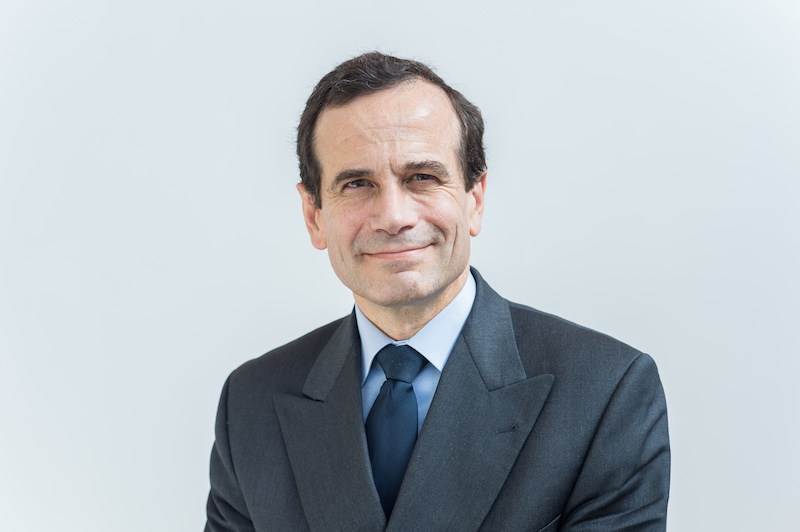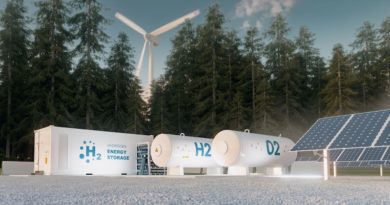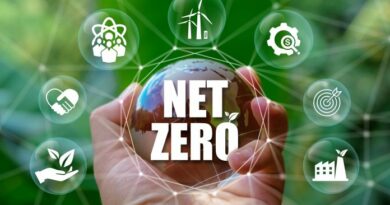
Hydrogen – Making Europe a leader in each segment of this strategic value chain
Europe is striving to become the first carbon-neutral continent by 2050 and as a key milestone on this path, the European Commission proposes to raise the greenhouse gas (GHG) reduction target for 2030 to at least 55%.
ENGIE supports this highly ambitious objective which requires a strong acceleration of decarbonization and activation of all levers. In particular, energy efficiency and a substantial and rapid increase of all types of renewable energies production is required. Electrification will surely play a key role but will not be sufficient. Development of renewable electricity will have to be complemented by renewable and low-carbon gases and liquid fuels as well as renewable (district) heating and cooling solutions. Moreover, efficient planning and utilization of new and existing infrastructures both for electrons and molecules is a fundamental pillar of a more integrated energy system, indispensable to achieve decarbonization objectives in the most cost-efficient way while ensuring security of supply. Renewable and low carbon hydrogen will play a key role to decarbonize the energy system.
The role of hydrogen in an integrated, increasingly decarbonized energy system
Hydrogen is a very versatile energy carrier, which can be used in fuel cell vehicles (such as fuel cell trains, trucks and busses), heating installations (e.g. fuel cell micro CHPs), in hydrogen-ready gas turbines for electricity production or as a basis for e-fuels. It is also an indispensable feedstock in numerous chemical and industrial processes, e.g. in the production of ammonia, methanol or in refineries.
Hydrogen is a promising feedstock to produce steel.
It is however crucial that hydrogen is produced from renewable or decarbonized sources in order to make a real contribution to GHG reduction.
In this regard, ENGIE is convinced that during transition both renewable and non-renewable low-carbon hydrogen are needed to achieve Europe’s ambitious climate targets. However, hydrogen from renewable sources should be the dominant long-term solution due to its specific benefits.
In fact, hydrogen helps to better integrate renewable power; converting wind and solar electricity into hydrogen allows these variable energy sources to be stored and/or transported in a cost-efficient way, if needed over long distances, before reconverting back into power or using the hydrogen directly in end-use sectors. Hydrogen produced from renewable power, i.e. inexhaustible sources, also has a better environmental footprint than other options. The development of territorial energy hubs offering renewable hydrogen and combining several uses (industry, mobility, other final uses), would foster the creation of local ecosystems. Moreover, renewable hydrogen has the potential to become a European strategic value chain capable to generate significant economic growth, jobs and competitiveness, not least due to the deep technological knowledge present in Europe and the leading role of European companies for instance in electrolysis manufacturing and renewable development. We strongly believe hydrogen can be part of an EU industrial renaissance, that both European public and private stakeholders aim at making happen.
At ENGIE, we are working on both sides; we are investing massively in renewable energies and we have kept that direction in spite of the sanitary and economic conditions we have faced, by adding 3 GW of wind, solar in our portfolio over the last year.
Furthermore we will almost double the share of renewables in our power generation mix (31 GW which makes up 30% today) to 58% by 2030. And at the same time, we are investing in R&I and industrial pilot projects, in order to demonstrate the huge potential of renewable hydrogen. Of course, renewable hydrogen is currently more costly to produce than non-renewable hydrogen. However, its costs will decrease sharply in the future with a competitiveness convergence with other technologies when the carbon price is included. Such a convergence is expected in the early 2030’s. Therefore, it needs to be developed right now, with the support of various mechanisms, to ensure its deployment at scale.
ENGIE is active in hydrogen production, transport, storage and uses, comprising almost the whole hydrogen value chain
ENGIE already has a full portfolio of large-scale European projects covering the whole spectrum of the upcoming hydrogen economy in Europe and other regions. Few examples: Masshylia, led in cooperation with Total near Marseille, aims to supply renewable hydrogen, produced locally by dedicated large scale solar farms, to the Total Biorefinery. The HyGreen Provence project developed with the Durance-Luberon-Verdon region (DLVA) and Air Liquide, comprises green H2 production, a dedicated H2 pipe & large scale underground storage.
ENGIE is also involved in, respectively, the development of a disruptive hydrogen liquefaction technology for heavy and long distance mobility (ELHySE project with ArianeGroup), the deployment of green H2 refueling stations in France (RHyZomes project), the HyNetherland project in cooperation with Gasunie, the production of methanol with captured CO2 (North-C-Methanol project), or E-methane production (combination of green H2 and captured CO2 like Methycentre project).
Let’s mention too the H2 SINES project in Portugal, where ENGIE join forces with key national players EDP, Galp and REN, to develop a renewable hydrogen integrated value chain starting with a 100 MW electrolysis capacity to supply Galp’s refinery and blend into REN’s Natural Gas network and scaling up to 1 GW for export to Northern Europe. And the list is not exhaustive.
Additionally, infrastructure companies are getting ready for the scaled use of hydrogen and other renewable gases. Indeed, by 2030, renewable hydrogen production capacity only is expected to reach 40 GW, the ambition stated in the European Hydrogen Strategy. Given the hydrogen production potential in different countries, hydrogen will need to be transported across the EU. To that end, the European Backbone Study authored by eleven gas infrastructure companies provides a possible map of approximately 6,800 km of H2 pipelines by 2030, consisting mainly of “repurposed” existing natural gas pipelines (estimated to be twice less expensive than new ones).
In France, by the same token, GRDF and GRTgaz also invest in R&D and equipment to adapt their grid for the blending of methane and hydrogen, if and when it is necessary before a 100% H2 network is developed.
Interconnections between Member states are considered as well; GRTgaz, in cooperation with CREOS, is developing the first H2 interconnection between France, Germany and Luxembourg by retrofitting existing gas pipes (MosaHYc project).
And all production means are analyzed: Elengy is assessing the decarbonized hydrogen production through pyrolysis and use of solid carbon, and the management of the CO2 value chain in the LNG terminals. On its side, Storengy works on dedicated H2 storage, based on the large potential to create new salt caverns and to convert existing natural gas caverns. It has just begun a 3 years project (Hypster) which will test a pilot cavern for H2 with the financial support of the Fuel Cell & Hydrogen Joint Undertaking.
Levers to enable the emergence of a Hydrogen market
As any “not yet mature” technology, Hydrogen – especially the renewable one – needs support. ENGIE welcomes the positive messages passed by the European Commission in its hydrogen strategy issued in July 2020. We are fully involved in the Clean Hydrogen Alliance launched by Commissioner Breton, with the support of Hydrogen Europe.
In addition to the direct investments ENGIE is already making, unleashing the huge potential of a hydrogen economy requires:
1) Setting the appropriate regulatory framework in the “Fit-for-55%” package expected by June 2021 to cover renewable hydrogen, and the complementary “gas” package. These are unique opportunities to create the right conditions for the rapid growth of renewable and low carbon hydrogen. Those levers should enable a level playing field between all types of hydrogen, to ensure the development of both renewable and low-carbon hydrogen. This starts with a clear terminology and certification schemes, for both of them.
On this basis,
market tools such as Guarantees of Origin can be developed, as well as market-based support mechanisms and underlying third-parties access to H2 infrastructures;
2) Providing public financial support, at national, transnational and European levels. National plans are announced by a growing number of Member States, sending a strong signal to private stakeholders. The use of the IPCEI frame in the hydrogen sector, which makes countries work together and unleashes public funding, is very welcome, as well as the priority given to hydrogen in the Recovery and Resilience Plans. These crucial commitments by Member States will be complemented by European instruments: Horizon Europe, the Innovation and Modernisation Funds, will help a lot in financing demonstration projects. We expect from the public authorities a stable and long-term support, especially for renewable hydrogen.
As a conclusion, ENGIE is a strong believer in the future of hydrogen, and the role that the European Union shall play in that sector. We are committed, together with industrial partners and policy makers, to make the EU the champion of the highly promising hydrogen economy.




